Related Research Articles

Smithfield, properly known as West Smithfield, is a district located in Central London, part of Farringdon Without, the most westerly ward of the City of London, England.
Aldersgate is a Ward of the City of London, England, named after one of the northern gates in the London Wall which once enclosed the City.

The London Charterhouse is a historic complex of buildings in Clerkenwell, London, dating to the 14th century. It occupies land to the north of Charterhouse Square, and lies within the London Borough of Islington. It was originally built a Carthusian priory, founded in 1371 on the site of a Black Death burial ground. Following the priory's dissolution in 1537, it was rebuilt from 1545 onwards to become one of the great courtyard houses of Tudor London. In 1611, the property was bought by Thomas Sutton, a businessman and "the wealthiest commoner in England", who established a school for the young and an almshouse for the old. The almshouse remains in occupation today, while the school was re-located in 1872 to Godalming, Surrey.
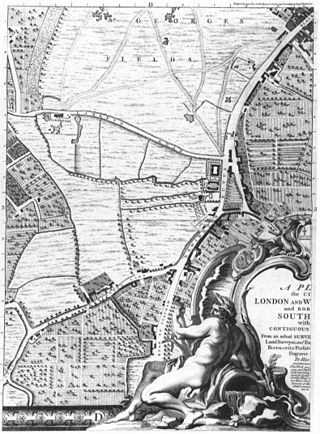
St George's Fields was an area of Southwark in south London, England.
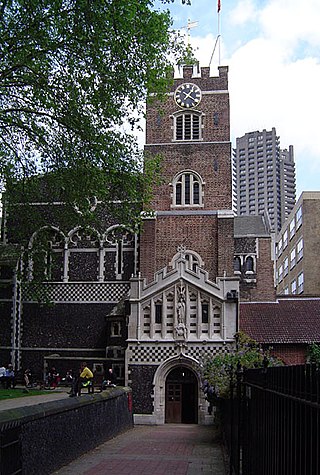
The Priory Church of St Bartholomew the Great, sometimes abbreviated to St-Barts-the-Great, is a mediaeval church in the Church of England's Diocese of London located in Smithfield within the City of London. The building was founded as an Augustinian priory in 1123. It adjoins St Bartholomew's Hospital of the same foundation.

St Helen's Bishopsgate is an Anglican church in London. It is located in Great St Helen's, off Bishopsgate.

St Etheldreda's Church is a Catholic church in Ely Place, off Charterhouse Street in Holborn, London. The building is one of only two surviving in London from the reign of Edward I, and dates from between 1250 and 1290. It is dedicated to Æthelthryth, or Etheldreda, the Anglo-Saxon saint who founded the monastery at Ely in 673. It was the chapel of the London residence of the Bishops of Ely.

St Botolph without Aldersgate is a Church of England church in London dedicated to St Botolph. It was built just outside Aldersgate, one of the gates on London's wall, in the City of London.
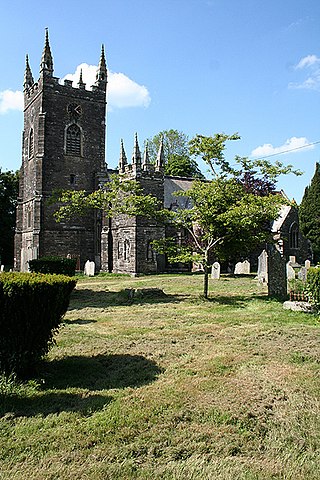
Werrington is a civil parish and former manor now in Cornwall, England, United Kingdom. Prior to boundary changes it straddled the Tamar and lay within the county of Devon. The portion on the west side was transferred to Cornwall by the abolition of Broadwoodwidger Rural District by the Local Government Commission for England in 1966. It is situated 1 mile (1.6 km) to the west of the Tamar, the traditional boundary between Devon and Cornwall, and 1 mile (1.6 km) north of Launceston.
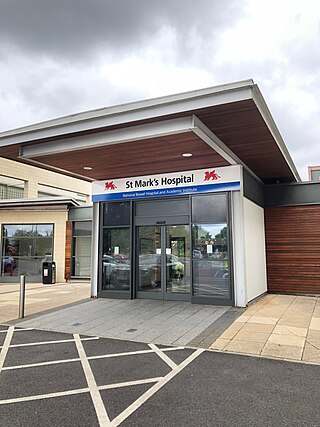
St Mark's Hospital, The National Bowel Hospital is a hospital in Park Royal, Greater London, England. Managed by London North West University Healthcare NHS Trust, it is the only hospital in the world to specialise entirely in intestinal and colorectal medicine and is a national and international referral centre for intestinal and colorectal disorders. It is the only hospital in the UK, and one of only 14 worldwide, to be recognised as a centre of excellence by the World Organisation of Digestive Endoscopy.
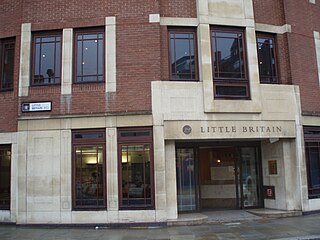
Little Britain is a street in the City of London running from St. Martin's Le Grand in the east to West Smithfield in the west. It is situated in the Aldersgate and Farringdon Within wards. Postman's Park is also bounded by Little Britain.
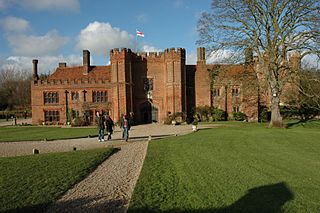
Leez Priory is a 16th-century mansion in Little Leighs, a small parish in the district of Chelmsford in the county of Essex, England. The civil parish boundary between Felsted and Great and Little Leighs crosses the priory, so that it partially lies in Felsted and partially in Great and Little Leighs. The priory was designated a Grade I listed building in 1952.

Sir John Talbot of Grafton, Worcestershire was a prominent recusant English Catholic layman of the reigns of Elizabeth I of England and James I of England. He was connected by marriage to one of the Gunpowder Plot conspirators, and by acquaintance or family ties to other important Catholic figures. He fell often under suspicion from the English government.
The King's Manor - formally 'The City of London's King's Manor of the Town and Borough of Southwark' - is an institution of the City of London which is not a Livery Company as it is territorially rather than trade based, being the organisation of the Juror freemen of the Court Leet. The Manor covers the area from the western-side of Borough High Street, Southwark, to the borders of Newington and Lambeth. The manor originally lay in Surrey.

The Bartholomew Fair was one of London's pre-eminent summer charter fairs. A charter for the fair was granted by King Henry I to fund the Priory of St Bartholomew in 1133. It took place each year on 24 August within the precincts of the Priory at West Smithfield, London until 1855 when it was banned due to causing public disturbances.
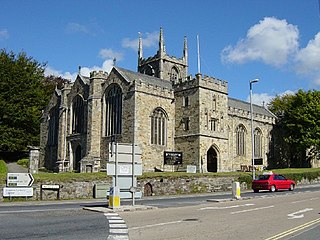
St Petroc's Church, Bodmin, also known as Bodmin Parish Church is an Anglican parish church in the town of Bodmin, Cornwall, England, United Kingdom.
Grace Dieu Manor is a 19th-century country house near Thringstone in Leicestershire, England, occupied by Grace Dieu Manor School until 2020. It is a Grade II listed building.
Henry Denne was a Church of England clergyman and controversialist, later a prominent General Baptist.
Michael Hudson (1605–1648) was an English clergyman who supported the Royalist cause during the English Civil War.
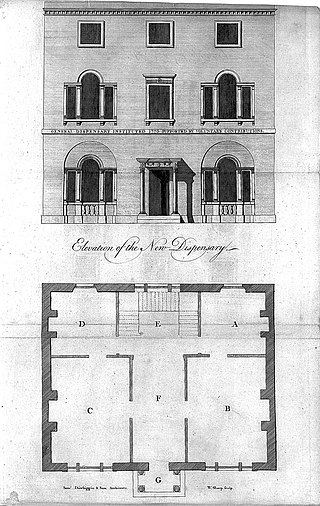
The General Dispensary, Aldersgate Street, was a London dispensary which provided outpatient treatment and home-visiting for sick adults and children.
References
- "City of London Maternity Hospital", The National Archives, 18 December 2008, retrieved 23 October 2017
- Bickley, Augustus Charles (1891), , in Lee, Sidney (ed.), Dictionary of National Biography , vol. 28, London: Smith, Elder & Co, pp. 152–153
 This article incorporates text from this source, which is in the public domain :Noorthouck, John (1773), "Book 2, Ch. 4: Aldersgate Ward", A New History of London Including Westminster and Southwark, London: R Baldwin, pp. 543–545
This article incorporates text from this source, which is in the public domain :Noorthouck, John (1773), "Book 2, Ch. 4: Aldersgate Ward", A New History of London Including Westminster and Southwark, London: R Baldwin, pp. 543–545